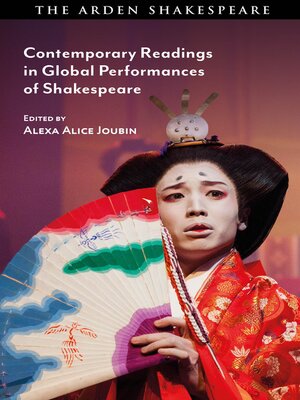
Sign up to save your library
With an OverDrive account, you can save your favorite libraries for at-a-glance information about availability. Find out more about OverDrive accounts.
Find this title in Libby, the library reading app by OverDrive.



Search for a digital library with this title
Title found at these libraries:
| Library Name | Distance |
|---|---|
| Loading... |
A concise guide to global performances of Shakespeare, this volume combines methodologies of dramaturgy, film and performance studies, critical race and gender studies and anthropological thick description.
This companion guides students from critical methodologies through big pictures of global Shakespeare to case studies that employ these methodologies. It uses a site-specific lens to examine global performances of Shakespeare on stage, on radio and on screen.
As well as featuring methodological chapters on modernist adaptations, global cinema, multilingual productions and Shakespeare in translation, the volume includes short histories of adaptations of Shakespeare in Southeast Asia, Latin America, the Arab world, India, the Slavic world, Iran, Afghanistan and the Farsi-speaking diaspora. It uses these micro-historical narratives to demonstrate the value of local knowledge by analysing the relationships between Shakespeare and his modern interlocutors.
Finally, thematically organized case studies apply the methodologies to analyse key productions in Brazil, Korea, Yemen, Kuwait, China and elsewhere. The final chapter considers pedagogical strategies in a global setting. These chapters showcase the how of global Shakespeare studies: how do minoritized artists and audiences engage with Shakespeare? And how do we analyse the diverse and polyphonic performances with an eye towards equity and social justice?
This companion guides students from critical methodologies through big pictures of global Shakespeare to case studies that employ these methodologies. It uses a site-specific lens to examine global performances of Shakespeare on stage, on radio and on screen.
As well as featuring methodological chapters on modernist adaptations, global cinema, multilingual productions and Shakespeare in translation, the volume includes short histories of adaptations of Shakespeare in Southeast Asia, Latin America, the Arab world, India, the Slavic world, Iran, Afghanistan and the Farsi-speaking diaspora. It uses these micro-historical narratives to demonstrate the value of local knowledge by analysing the relationships between Shakespeare and his modern interlocutors.
Finally, thematically organized case studies apply the methodologies to analyse key productions in Brazil, Korea, Yemen, Kuwait, China and elsewhere. The final chapter considers pedagogical strategies in a global setting. These chapters showcase the how of global Shakespeare studies: how do minoritized artists and audiences engage with Shakespeare? And how do we analyse the diverse and polyphonic performances with an eye towards equity and social justice?







